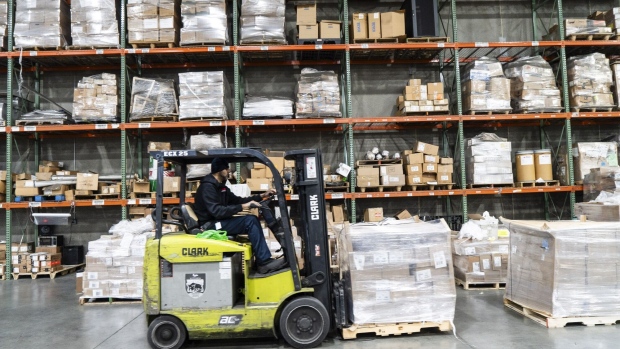Mar 14, 2024
US Producer Prices Jump, Adding to Signs of Persisting Inflation
, Bloomberg News

(Bloomberg) -- Prices paid to US producers rose in February by the most in six months, driven by higher fuel and food costs that add to evidence inflation remains elevated.
The producer price index for final demand increased 0.6% from January, Labor Department data showed Thursday. The gauge rose 1.6% from a year earlier, the largest annual advance since September.
The so-called core PPI, which excludes volatile food and energy categories, advanced 0.3% from the prior month, and 2% from a year ago.
The pickup in cost pressures at the wholesale level illustrates an uneven path for Federal Reserve policymakers seeking greater progress in their inflation fight. Consumer-price data earlier this week showed underlying inflation exceeded forecasts for a second month, reaffirming expectations that the Fed will be in no rush to reduce interest rates.
Fed officials meet next week and are widely expected to keep their benchmark rate unchanged.
Separate data Thursday showed retail sales rose last month by less than forecast after a steep drop to start the year, underscoring concerns about the durability of consumer spending. Meanwhile, applications for jobless benefits decreased to a three-week low.
Read more: Retail Sales Miss Forecasts After Steep Drop in Prior Month
One reason economists parse the PPI report is because several categories are used to inform the Fed’s preferred inflation measure — the personal consumption expenditures price gauge. The February reading of the PCE is due later this month.
Services costs increased 0.3% after a 0.5% gain. Prices paid for portfolio management, a key element of the PCE price index, climbed 0.2%, a sizable softening from the prior month. The cost of hospital outpatient care increased 0.5%.
Prices paid to producers for goods jumped 1.2%, the first increase in five months. Nearly 70% of the advance was due to energy costs.
Stripping out food, energy and trade services, which is an even-less-volatile PPI measure, prices increased 0.4% after a 0.6% gain.
Costs of processed goods for intermediate demand, which reflect prices earlier in the production pipeline, rose for the first time in five months on a jump in energy. Excluding food and energy, processed goods for intermediate demand rose 0.5%, the most since May 2022.
--With assistance from Kristy Scheuble.
(Adds graphic)
©2024 Bloomberg L.P.






